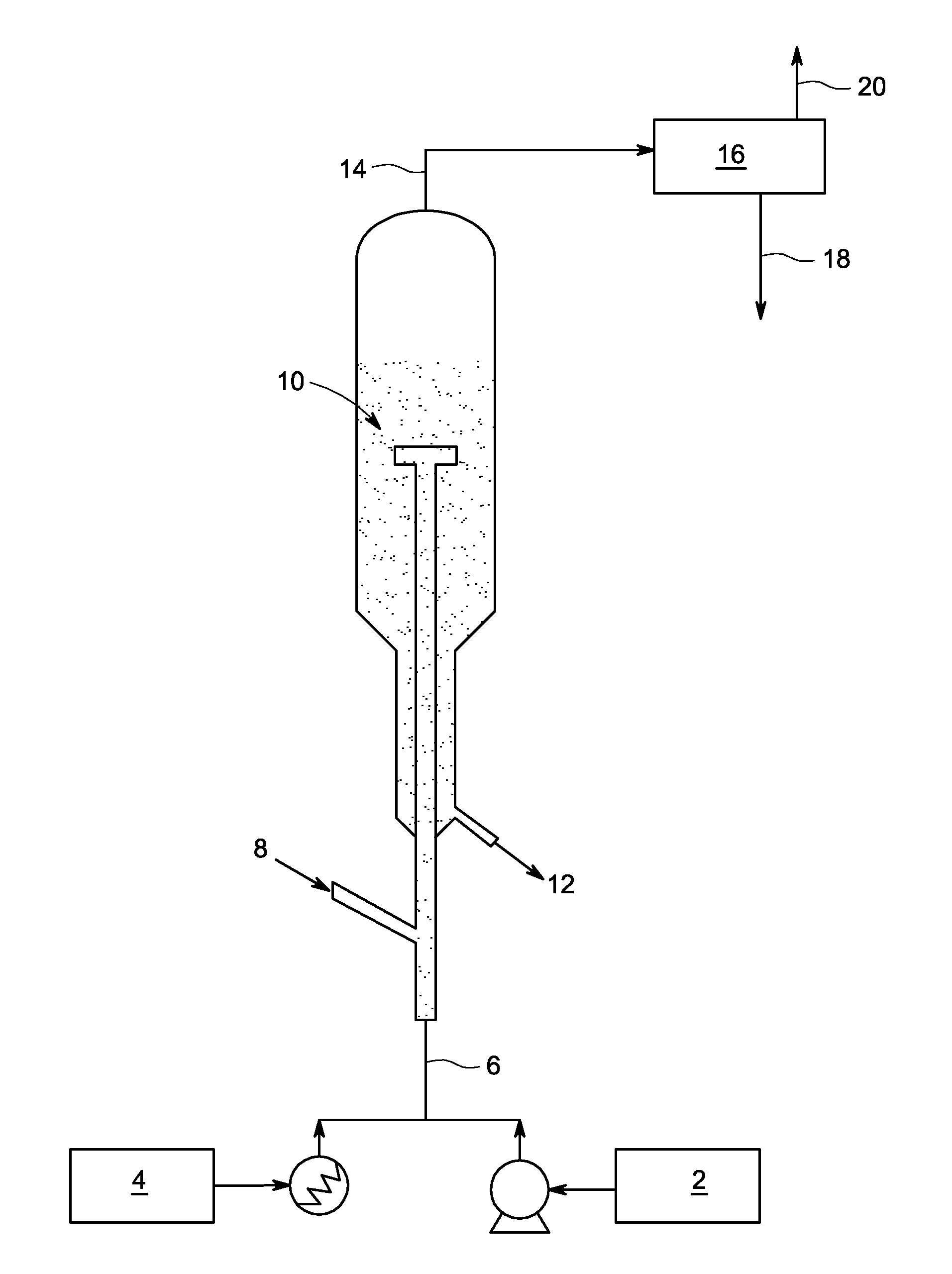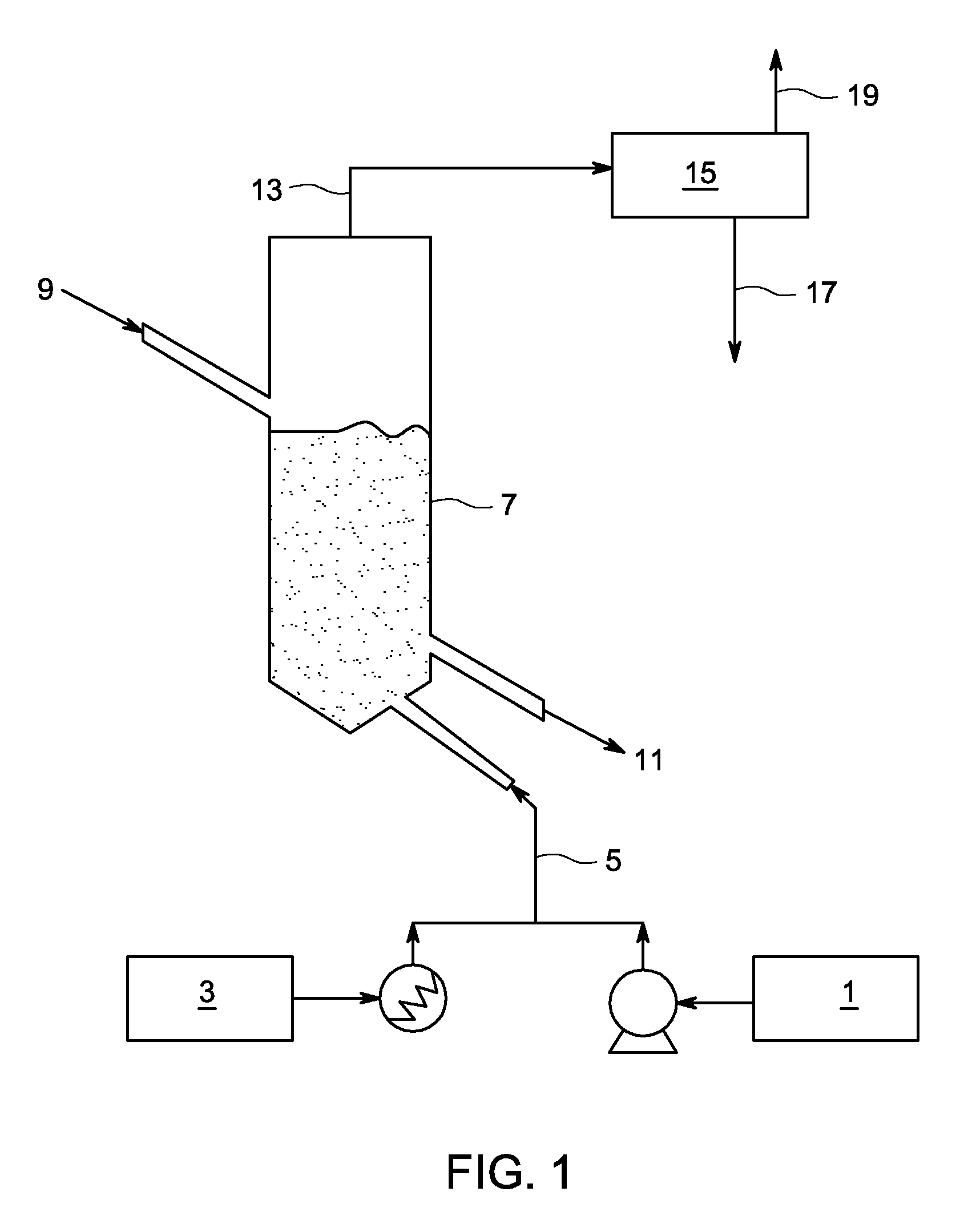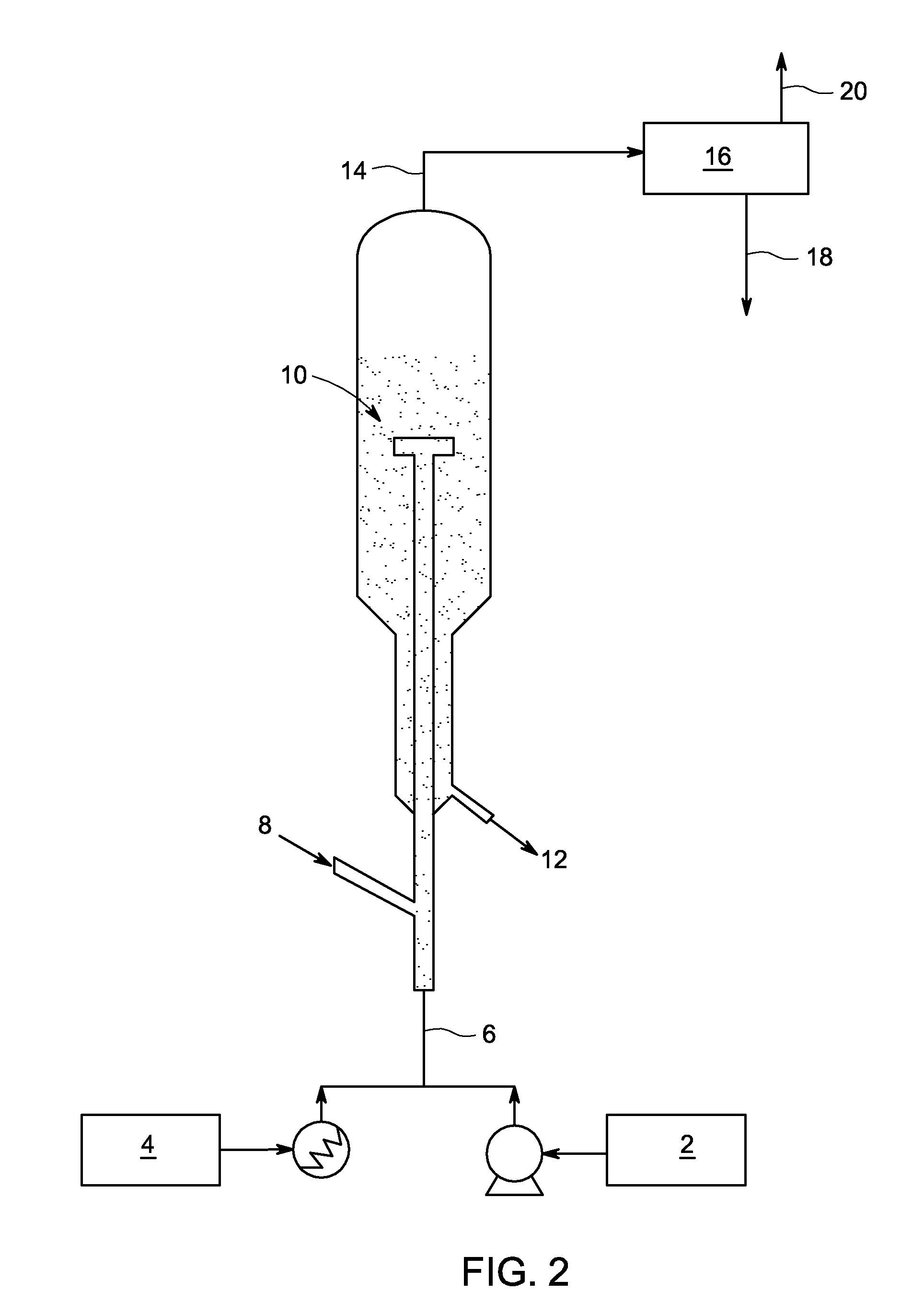Methods for removing contaminants from water
a technology for removing contaminants and water, applied in water/sewage treatment, water treatment compounds, specific water treatment objectives, etc., can solve the problems of increasing the salinity of local water sources or downstream, contaminated sewage from refineries and other industrial applications, and reducing the level of contaminant levels
- Summary
- Abstract
- Description
- Claims
- Application Information
AI Technical Summary
Benefits of technology
Problems solved by technology
Method used
Image
Examples
Embodiment Construction
[0015]The embodiments disclosed may be used as part of a zero liquid discharge (ZLD) system for treating industrial wastewater. The methods disclosed herein may replace reverse osmosis membranes, evaporators, and crystallizers units utilized in the traditional ZLD system. The embodiments combine the principles of SCWO processes and fluidized bed processes to reduce both organic contaminants and inorganic contaminants, including minerals and salts, from water in the same processing step or vessel. Inorganic contaminants include minerals, salts, and metals. Organic materials include, but are not limited to, recalcitrant organic compounds, aromatic compounds, and petroleum compounds. Specific examples include benzene and toluene.
[0016]In fluidized bed reactors, the catalyst bed is comprised of solid particles, preferably with a particle size distribution between 10 and 150 μm. The feed stream, typically a gas, is fed upwards through the catalyst bed. The velocity of the feed stream is ...
PUM
| Property | Measurement | Unit |
|---|---|---|
| temperatures | aaaaa | aaaaa |
| temperatures | aaaaa | aaaaa |
| particle size distribution | aaaaa | aaaaa |
Abstract
Description
Claims
Application Information
 Login to View More
Login to View More - R&D
- Intellectual Property
- Life Sciences
- Materials
- Tech Scout
- Unparalleled Data Quality
- Higher Quality Content
- 60% Fewer Hallucinations
Browse by: Latest US Patents, China's latest patents, Technical Efficacy Thesaurus, Application Domain, Technology Topic, Popular Technical Reports.
© 2025 PatSnap. All rights reserved.Legal|Privacy policy|Modern Slavery Act Transparency Statement|Sitemap|About US| Contact US: help@patsnap.com



